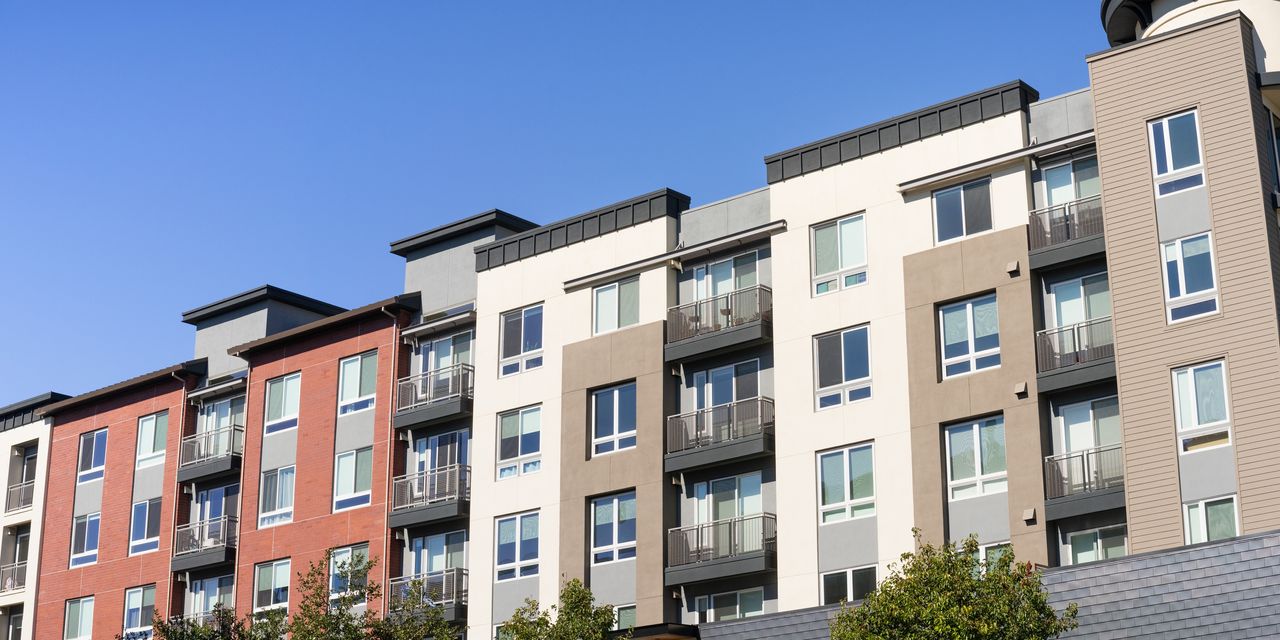Housing costs continue to drive U.S. consumer prices up in July, but economists are expecting a slowdown in the coming months.
The rise in shelter inflation, which refers to the rising cost of rental and owner-occupied housing, accounted for 90% of the monthly increase. The rate of inflation also rose for the first time in more than a year, as the cost of living continues to rise.
While the overall Consumer Price Index rose 0.2% in July, shelter rose 0.4% from the previous month. Rents rose 0.4% in July, and owners’ equivalent rent rose 0.5%.
Shelter also rose 7.7% over the last year, which accounts for two-thirds of the total increase in all items, aside from food and energy. In contrast, the overall rate of inflation as compared to last year was just 3.2%.
Shelter inflation is a ‘lagging indicator’
The CPI’s measure of shelter inflation is considered by economists to be a lagging gauge, as rent growth slows down.
The increase in inflation mostly reflects “the still high rates of lagging shelter price inflation,” Paul Ashworth, chief North American economist at Capital Economics, wrote in a note.
If shelter were to be stripped out of the index, the data reveals that the annual rate of inflation was only 2.5%, he added, and core prices fell 0.1% from the previous month.
“Yes, if you strip out everything that’s going up, then of course inflation appears to be well-behaved,” Ashworth said. “But in this case, it makes sense since we know shelter costs are a lagging indicator and the collapse in measures of new rent inflation demonstrates that over the next 12 months, shelter inflation will not just fall back to more normal rates, but might even drop below the pre-pandemic average.”
Private data sources indicate that the Fed’s preferred inflation gauge is running behind by a few months. Data from Apartment List showed that national rent growth fell by 0.7% from a year ago.
Even though rents are up on a monthly basis by 0.3%, that has already peaked for the year. “Rent growth in 2023 has come in at a much slower pace than previous years thanks to a combination of sluggish demand and increasing supply,” Apartment List added.
Fed researchers also expect shelter inflation to “slow significantly” in the next year and a half, which will bring down overall inflation.
Rents are expected to slow as more rental housing comes to the market. Apartment List noted that there were nearly 1 million apartments under construction across the U.S., which was a record high, as seen in the chart below.
“The housing data highlight two important facts: 1) an increase in supply — and not Federal Reserve actions — pushes housing costs down and 2) changes in shelter costs take a while to show up in the overall inflation measure,” Lisa Sturtevant, chief economist at Bright MLS, said in a statement.
She added that there is a 9- to 12-month lag between when rents moderate and when the drop in housing costs shows up in the CPI.
Rising home prices may keep shelter inflation elevated
To be sure, shelter inflation may be uncompromising as home prices continue to rise, according to a group of economists.
A lack of housing inventory is driving up home prices in parts of the country. For instance, prices of single-family homes rose in 60% of the metro areas measured by the National Association of Realtors. The NAR also said that the median price of a resale home was $402,600 in the second quarter of 2023, which is down 2.4% compared to a year ago.
“With home prices rebounding significantly in recent months, it is doubtful that we are going to see dramatic further slowing in shelter costs from here,” Stephen Stanley, chief U.S. economist at Santander U.S. Capital Markets, wrote in a note. “Perhaps we could get as low as 0.3% per month or so, but that may be about as low as we see.”
Though she believes that shelter inflation will come down in the fall, Diane Swonk, chief economist at KPMG, said she was concerned about home values rising again “as that could limit the improvement in inflation due to shelter costs and become more of a sticking point for the Fed.”
Swonk said that while the slowdown in rent growth will take time to work its way through the economy, tightening credit conditions may slow down the construction of apartments, which “means less future rental supply, which could also dampen eventual progress on rents.”
Andrew Levin, a former Fed economist and an economics professor at Dartmouth College, told MarketWatch that rents probably won’t fall for many years to come, which means shelter inflation won’t fall as much as others expect it to.
Rents are “going to probably trend higher for, in my view, for multiple years as the level of rents catches up to the level of house prices,” Levin said.
Levin noted that private-sector data also misses the fact that they look at new leases, versus renewals by existing renters. Why that matters is because, as most people stay in the same place for multiple years, and landlords don’t hike up rents dramatically to prevent tenants from leaving.
“There’s quite a long way for the rent rates to catch up,” Levin added. “I wouldn’t necessarily expect that the shelter inflation going to of accelerate, I’m just saying that it’s going to remain high.”
Nonetheless, not all economists agreed with that assessment.
“Home prices — which are still rising in many markets — are not part of the CPI calculation,” Sturtevant explained. “Owners’ housing costs are approximated by an ‘owners’ equivalent rent’ metric which tracks closely with rent trends.”
“Based on this data, and given how important shelter costs are to the overall inflation measure, we should expect to see declining rents bring inflation down over the coming months—with or without another Fed rate increase,” she added.
Read the full article here








